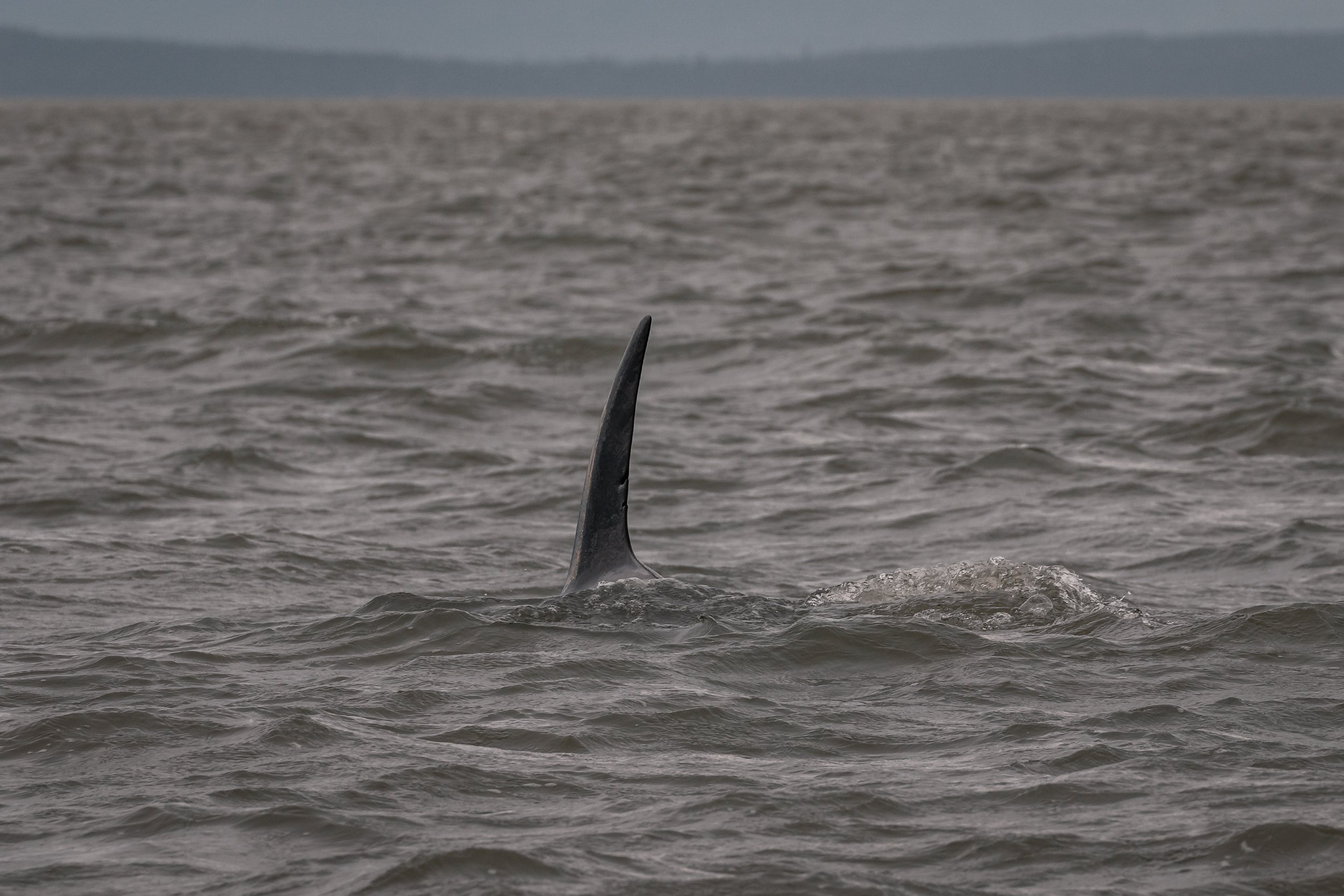April 2nd - Traveling with the T036A's
Our staff were itching to get on the water as April 1st is the traditional opening day for most whale watching companies, though we were open all winter it’s still very exciting as more of our whale watching friends are out on the water. It’s always nice to hear their voices on the radios and see other boats out on the water.
We had to travel for some time today to find out whales. Some days we find them in 10 minutes right outside the harbor, and some days, like today, we travel for 2.5 hours before we come across a pod. Believe it or not we don’t track our whales with satellites, tags, or drones. All the whale sightings we have are from people’s eyes and nothing more. Sometimes we get second hand reports from people on shore, ferries, tugboat drivers or the occasional sea plane, but most days it is our Naturalist and Captain scanning the waters looking for blows and fins.
Whales can move fast, and they can hold their breath for a very long time, so a lot of whale watching is just being in the right place at the right time, but it helps when your staff have eagle eyes and know the little signs to look for.
Today our staff were on their A game and we found our whales in the Strait of Georgia. The T036A’s were cruising along. This pod is led by Matriarch T036A Leland, born in 1990. She travels with her daughter T036A1 Tierna (2005), T036A2 Kailas (2012), T036A3 Storm/ Mike III (2015) and her youngest T036A5 born just last year.
Leland is the daughter of T036 Flapjack, who we’ve spent a lot of time with already this year. She’s also the sister to T137 Loon – Jack’s mom, who we saw just the day before in Active Pass. One of the coolest things about studying orcas is learning about their family trees and becoming so familiar with these whales and their habits. To think that we only have half the puzzle pieces is quiet fascinating. Orcas don’t mate for life (that we know of) and don’t have a set breeding season, so we aren’t sure who the father of calves are, and we don’t know any details about the paternal side of the family. However, with just the maternal side of the family tree we can connect so many whales together and get these beautiful family trees. Knowing this information isn’t just for fun either, but it helps us learn about their social dynamics. It’s cool to see sister whales joining up after extended time away, especially when there is a new baby in one of the pods. We also see matriarchs return to their mother’s side year after year to spend a period traveling by their side - kind of like when humans go back to visit their parents for holidays. Knowing even a part of their family trees provides us a little glimpse into the complex social lives of these incredible animals.
Below are some photos of today’s adventure taken by Marine Naturalist Val Watson.
T036A Leland and her newest calf, T036A5!
The T036As surfacing together.
T036A2 Kailas and T036A Leland surfacing.
T036A5 (left) surfacing just behind mom T036A and T036A3 (right).
T036A5 (left), T036A Leland (middle), and T036A3 (right).
T036A3 surfacing.
T036A2 Kailas surfacing.
T036A1 Tierna swimming away from the boat!
The matriach T036A Leland herself!
Bye whales!
A congregation of bald eagles near Valdes Island
“What are you looking at?”
Coming in for a landing!
Nailed it!
Bald eagles bad hair day.
A big male Stellers Sea Lion hauled out.
Can you spot the poop amongst all these Steller Sea Lions?
Two Long tailed duck females swimming near the haul out.
Harbour Seals in the Flat Top islands.
Can you spot the seal through is camouflage?
California Sea Lion.
Now that’s a workout!



























